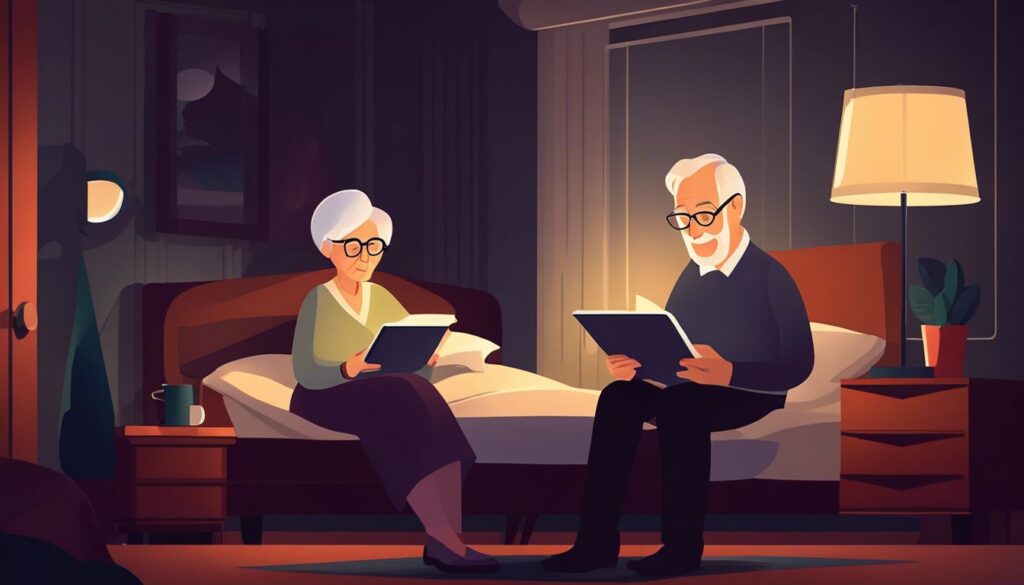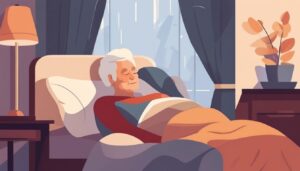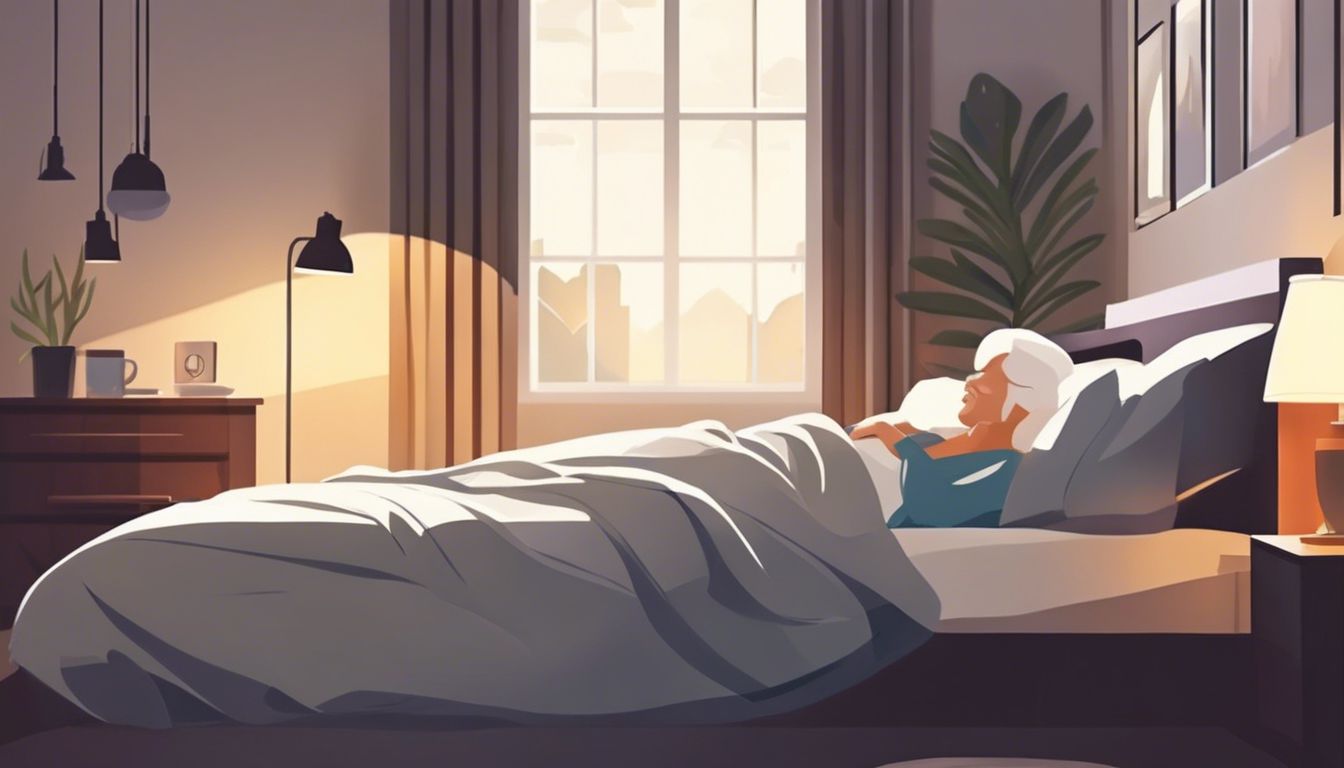Creating a senior-friendly bedroom involves key elements that enhance comfort and safety. These features make daily life easier for older adults with mobility or health issues. Read on to learn about crucial components for a restful senior bedroom.
Adjustable Beds for Comfort and Accessibility
Adjustable beds offer a game-changer for seniors and their caregivers. These specialized sleeping surfaces allow easy height adjustments, ranging from 25 to 36 inches. This feature eliminates the need for bending down, reducing strain on both the senior and caregiver.
The beds’ adaptability extends beyond height – they can be positioned to elevate legs or upper body, promoting better circulation and easing respiratory issues.
Safety is paramount with adjustable beds. They come equipped with safety rails and assist bars, providing stability and preventing accidental falls. For caregivers, these features simplify the process of helping seniors in and out of bed.
The beds’ design focuses on ease of use, ensuring seniors can comfortably manage getting in and out independently when possible. This blend of comfort and practicality makes adjustable beds an essential element in creating a senior-friendly bedroom environment.
Non-Slip Flooring to Prevent Falls
Safety starts from the ground up in a senior’s bedroom. Non-slip flooring is crucial to prevent falls, a leading cause of injury among older adults. Hardwood and laminate floors, while attractive, can be hazardous without proper precautions.
Adding safety strips or securing rugs with taped edges can significantly reduce slip risks. For maximum safety, consider installing anti-skid flooring throughout the room.
Cords and cables pose another tripping hazard for seniors with mobility issues. These should be kept clear of walking paths or securely taped to the floor. Proper flooring choices and careful room arrangement can make a world of difference in creating a safe haven for elderly loved ones.
Next, let’s explore how adjustable beds can further enhance comfort and accessibility for seniors.
A safe floor is the foundation of independent living for seniors.
Enhancing Bedroom Safety and Convenience
Creating a safe and convenient bedroom for seniors is crucial. Better lighting, easy-to-use controls, and safety rails can make a big difference. Read on to learn more about these important features.
Ample Lighting for Visibility and Safety
Proper lighting is crucial in a senior’s bedroom. It enhances visibility, reduces fall risks, and improves overall safety. Smart technology offers innovative solutions like touch-activated bedside lamps and motion-sensor lights under the bed.
These features provide convenience and security, especially during nighttime trips to the bathroom.
Natural light plays a vital role in senior bedrooms. Multiple windows allow sunlight to flood the space, improving mood and regulating sleep patterns. For artificial lighting, wall sconces offer practical illumination without taking up floor space.
Bedside lamps or motion-activated night lights further ensure a well-lit environment, promoting independence and peace of mind for both seniors and caregivers.
Easy-to-Reach Controls and Safety Rails
Adequate lighting sets the stage for a safer bedroom environment. To complement this, easy-to-reach controls and safety rails play a crucial role in enhancing comfort and independence for seniors.
Placing controls at a convenient height allows elderly individuals to adjust their surroundings without strain. Light switches, thermostats, and bed controls should be within arm’s reach.
Safety rails and grab bars near the bed offer support during transitions. For those with limited mobility, automated window coverings operated by remote control can simplify daily tasks.
A phone with a large, backlit keypad near the bed ensures quick access to help if needed. Caregivers should also keep a list of emergency numbers in the bedside drawer for easy reference.
Preventing Bed Sores in Seniors
Bed sores pose a serious threat to seniors with limited mobility. These painful skin ulcers develop from prolonged pressure on bony areas of the body. Prevention is key. Regular repositioning every two hours helps alleviate pressure on vulnerable spots.
Special mattresses and cushions designed to redistribute weight can significantly reduce risk. Proper nutrition and hydration also play crucial roles in maintaining healthy skin integrity.
Caregivers must vigilantly monitor seniors for early signs of skin breakdown. Daily skin checks, especially in areas prone to pressure sores, allow for prompt intervention. Keeping skin clean and dry is essential.
Gentle cleansing and moisturizing help maintain skin health. For seniors with incontinence, frequent changes and use of protective barriers safeguard against moisture-related skin damage.
These proactive measures form a comprehensive approach to bed sore prevention in elderly care.
Creating a cozy bedroom for seniors isn’t just about comfort – it’s about safety and independence. Smart design choices can make a world of difference. From adjustable beds to non-slip floors, every detail matters.
With the right setup, seniors can rest easy and move freely in their own space. A well-planned bedroom becomes a sanctuary, promoting better sleep and overall well-being for our loved ones as they age.
For more detailed information on safeguarding the elderly against bed sores, check out our comprehensive guide here.
FAQs
1. How can I make a bedroom safer for elderly people?
Install bed railings and adjust bed height for easy access. Use mobility aids like wheelchairs if needed. Place the bedroom on the ground floor to avoid stairs. Add assistive technology for temperature control and vision issues.
2. What interior design tips help create a comfortable senior bedroom?
Focus on relaxation and aged care needs. Use soft lighting and calming colors. Install easy-to-use doorknobs and switches. Consider a mattress protector for comfort. Work with interior designers who specialize in elder care.
3. How important is bathroom accessibility for seniors?
Very important! Ensure the restroom is close to the bedroom. Install grab bars and a raised toilet seat. Use non-slip mats. For those with Alzheimer’s, clear signage can help. Easy access to facilities promotes aging in place.
4. What if the bedroom can’t be on the ground floor?
Don’t worry! Install a stair lift or elevator for safe access. Ensure proper lighting on stairs. Use contrasting colors on steps for better visibility. Always have a backup plan for power outages.
5. How can technology improve a senior’s bedroom comfort?
Smart home devices can help with temperature control and lighting. Voice-activated systems are great for those with limited mobility. Livspace offers tech solutions for senior bedrooms. Remember, the goal is to enhance comfort and independence.









